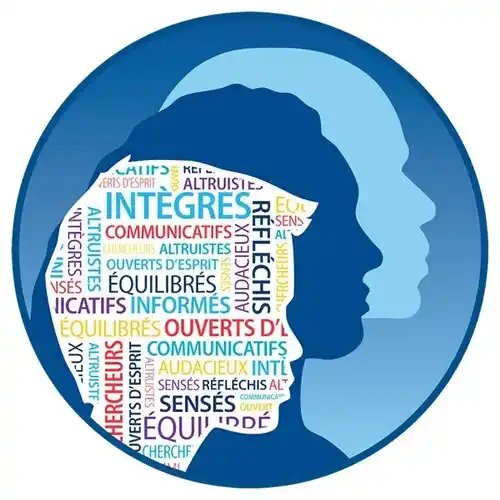Here are a few TOK essay examples from the previous TOK essay examples 2020 batch
TOK ESSAY EXAMPLE 2
“Areas of knowledge are most useful in combination with each other.” Discuss this claim with reference to two areas of knowledge.
Plato defined knowledge as ‘justified true belief’ however, the meaning of knowledge must not be restrained within the boundary of contextual language. Knowledge is interwired and its connections act as subdomains to serve the purpose, within the domain and outside its academic boundary.
Knowledge is conspicuous in different areas of knowledge. This problematic commodity brings along a lot of perspectives, meanings, values, and limitations. Therefore, establishing certainty to reach the best of the utility, we often aggregate concepts in different contexts to reach understanding. Having knowledge of different areas certainly does aid the process and its usefulness.
A strong grasp of concepts of chemistry is required to treat an ailing condition in the human body. While the study of Psychology can have an added value in not just dealing with the body but a healthy mind too. It is often required to trespass into different AOKs in order to understand the scheme of things better as a combination. Therefore for a medical practitioner knowledge of human and natural science can provide a shallow insight.
When areas of knowledge are used in combination with one another, it assists in connecting the dots to arrive at an accurate picture, not always but sometimes. This is evaluated through art and history by answering, ‘Do imagination and emotions help in constructing an accurate picture of the past? ‘
Students’ historical hunger is satisfied through powerful resources of art that feed thinking and engagement about history. What we know about the past could be the myths and facts, therefore art is capable of acknowledging both to some extent.
History has always been focused on featuring human conditions and the only way to believe and experience those conditions is to rely on limited sources as evidence. Some might argue that memory helps in reconstructing our knowledge of the past, while others agree that art assists history through creative imagination.
 Download Resources from Our IB Online Portal!
Download Resources from Our IB Online Portal!
No other discipline is more inherently interdisciplinary than art and history. In various ways, the different facets of art speak about history. By looking at the artwork’s style, color, and symbolism, we can learn about the culture that produced it, signifying the historical cognizance.
From a play that shows the rise of a culture to a piece of the architectural masterpiece that holds various puzzles about the past, art is a vital part of societies’ attempt to understand history[1].
Art exhibits important meanings about historical ways of life’s hardships, experiences, or just practices enjoyed through literature which often represents incidences to influence society at large. Art makes a significant impact on future generations to get an idea of what life was.
Art has profoundly demonstrated progress and change in societal values, the standard of living and therefore without these, history would just have been simple tales written as texts passed down through generations.
Art is a thoughtful product that generates not only emotive aestheticism but also solves the purpose of academic excellence. Its cognitive element is usually considered significant in recreating the evidence about the events of the past.
🧠 Join Our AI-Based Adaptive Online IB Learning Path
Pablo Picasso’s Guernica depicts the massacre of a Basque village in 1937[2]. Picasso’s creative imagination gave a visual response and a token of the memorial after receiving the first-hand information as he used black and white colors to have a funeral appeal. The innovative use of flat, Picasso-styled figures is effective in portraying some kind of fighting or terror evoking emotions of fear and empathy too.[3]
Picasso’s quest for knowledge about the unfortunate event resulted in using both primary and secondary emotions in Guernica, intelligently, to depict the suffering of the Spanish people. Picasso was Spanish and undoubtedly his emotions on canvas would be national biased. His depiction of the horrifying events of violence and chaos depicted history’s first aerial saturation bombing of the civilian population[4].
Guernica is a distorted perception that uses emotional coloring to spread awareness about some aspect of reality. A typical negative bias supports Guernica to be the ‘most useful’ object to portray history because we tend to focus more on the negative things than the positive. At first glance, Guernica reveals confusing and chaotic thoughts for its viewers as it provides overlapping and intersecting boundaries that shift perspectives.
Critics claim that it fails to convey the important story despite its visual appeal. The late art critic, John Berger argues that Guernica makes no reference to the Spanish civil war. In fact, under certain experiments, Guernica was displayed to actual survivors of the bombing and they were utterly confused. Lastly Tom Wolfle the novelist claims that Guernica looks like a horse choking on a banana[5]
Museums play a fundamental role in opening the doors to the realms of art and history. Notably, artists are compared to historiographers due to their extensive knowledge of the subject. The combination of the two AOKs helps in forming personal connections, not just about the artist’s perspective but also the facts embedded in the story. Perception increases the sophistication of the students’ understanding of history because of its selective nature.
The interests of the students and the underlying emotions help perception to propel, especially through the point of view of history and arts combined. Not only this, ‘seeing is believing’ also helps in making connections that provokes art students to gather insight about events, time periods by using colors and shapes to interpret lifelike historical inquiries.
 Online IB Coaching from Experienced School Teachers!
Online IB Coaching from Experienced School Teachers!
Tshibumba, a Congo artist, artworks are a part of the “History of Zaire ” collection and are of significant academic importance that contributes as rich in written, oral, and visual history displayed in the Tropen Museum in Amsterdam[6].
Unfortunately, many major museums shy away to display some truly great works of art forbidding public view either due to lack of space or they no longer fit into the museum’s curatorial missions[7].
Tehran Museum of Contemporary Art removed many paintings as they represent western cultures and were considered to be symbols of decadence including Francis Bacon’s, ‘Two Figures Lying on a Bed with Attendants due to nudity or homoerotic overtones[8]. As time passes, the quantum of artifacts continues to increase however adding little usefulness due to the subjective approach.
📊 Data-Driven IB Progress Reports via Online Platform
Additionally, the cinematic studies in arts have profoundly added value due to its powerful display of culture, education, leisure and propaganda to gain historical knowledge[9] Arts perhaps could be unarguably the best way to feed nostalgia, to portray historical events. The fusion of creative imagination along with commemorated facts places cinema in a respectable cachet of entertainment as art.
John Akomfrah’s ‘Handsworth songs’ examines the historical, social, and political context of social unrest and aspires to explore the anger and disillusionment within the black communities. Not only this, Issac Julien’s Young Soul Rebels are experimental documentaries on black history. He also creatively exemplifies the topic of homosexuality, both within white society and black[10].
However, there is an uncomfortable compromise between professional historians and historical films because cinema neglects the true spirit of history and often offers a representation of artistic imagination. Overlooking the finer details of history, including footnotes, may invariably lead to passing on inaccurate storytelling [11]. Such dilution and deviation through art are not considered beneficial.
 College Counseling + IB Online Tutoring Combo Plans!
College Counseling + IB Online Tutoring Combo Plans!
While films can powerfully convey the foundations of historical information to millions of people, it fails to present a true document on the account of eyewitnesses. Spielberg’s Schindler’s list captures the true story of Oskar Schindler with almost no real historical accuracy[12]. In addition to this, the popular Disney movie Pocahontas offers a distorted version of a 400-year-old tale about the tribal individuals of Virgina[13].
Another perspective on history and arts, as a combination, can be established where teachers had to add humor and satire in the classroom to engage students’ attention. Few also found it difficult to teach a historical period with limited resources i.e. art. This results in the loss of different perspectives and students only receiving one half of the story.
In some cases, few resources miss the misrepresented version of history depicted in order to discuss important historical timelines[14].
Group 4 Project Supervision via Online Support
Finally, the studies of recorded pasts raise questions on the certainty about anything in the past and therefore documentary evidence plays an important role. Such evidence could be narrative style, use of language, construction of historical theory, using reasoning and imagination to be applied to various forms of art.
Similarly, art has a cognitive function to play in shaping up the beliefs about the past. The artistic creation using imagination and emotions has struck a role to convey historical events through movies and text. Undoubtedly no other areas of knowledge complement each other the way art and history do.
Despite first-hand field information, an artist’s imagination often fails to meet the spectator’s expectations, thereby inability to satisfy the quest for historical knowledge.
Similarly, most museums as archives of history and arts together have been incapable of utilizing the resources. It was contradictory to learn that much of the artwork is not used and put on display due to lack of time, space, culture. In such scenarios, many teachers find it difficult to combine the two AOK’s as their cognitive utility. However many artists have appreciated the true meaning of history while others’ work has been put down due to cultural differences.
 Online Guidance for HL Essay IB English A!
Online Guidance for HL Essay IB English A!
Furthermore few documentary movies have aided in presenting us social perspectives of past time, however many films have also been accused of misrepresenting history.
The perspective of history can be predisposed without the relevant source material and therefore the use of contemporary documents, explanations in literature, viewpoints of individual eyewitnesses come in different shapes and sizes. Without the sense of emotion and imagination, history has little to offer without art. History and arts in combination with each other may not be most useful however they do serve their respective purposes together to a great extent.
Bibliography
[1] https://www.iesa.edu/paris/news-events/why-study-art-history
[2] https://www.widewalls.ch/magazine/pablo-picasso-guernica
[3] https://www.fresia.com/art-critic/the-failure-of-picassos-guernica/
[4] https://www.khanacademy.org/humanities/art-1010/cubism-early-abstraction/cubism/a/picasso-guernica
[5] https://www.fresia.com/art-critic/the-failure-of-picassos-guernica/
[6] https://voice4thought.org/the-relationship-between-art-and-history/
[7] https://www.bbc.com/culture/article/20150123-7-masterpieces-you-cant-see
[8] https://www.theartnewspaper.com/archive/rain-causes-bacon-alert-at-tate#:~:text=%E2%80%9CTwo%20figures%20lying%20on%20a%20bed%20with%20attendants%E2%80%9D%20is%20on,Contemporary%20Art%20until%20the%20autumn.&text=A%20Tate%20spokesman%20told%20The,measure%2C%20two%20works%20were%20removed.
[9] https://thoughteconomics.com/the-role-of-film-in-society/
[10] https://cpb-ap-se2.wpmucdn.com.
[11] https://www.ukessays.com/essays/history/historical-films-showing-different-perceptions-of-the-past-history-essay.php
[12] https://sites.google.com/a/csumb.edu/hcom352-schindlers-list-1993/historical-accuracy-of-the-film
[13] https://www.smithsonianmag.com/history/true-story-pocahontas-180962649/
[14] http://www.socstrpr.org/wp-content/uploads/2013/09/MS_06372_Spring2013.pdf
If you like what you read, you may consider reading IB Tok essay






